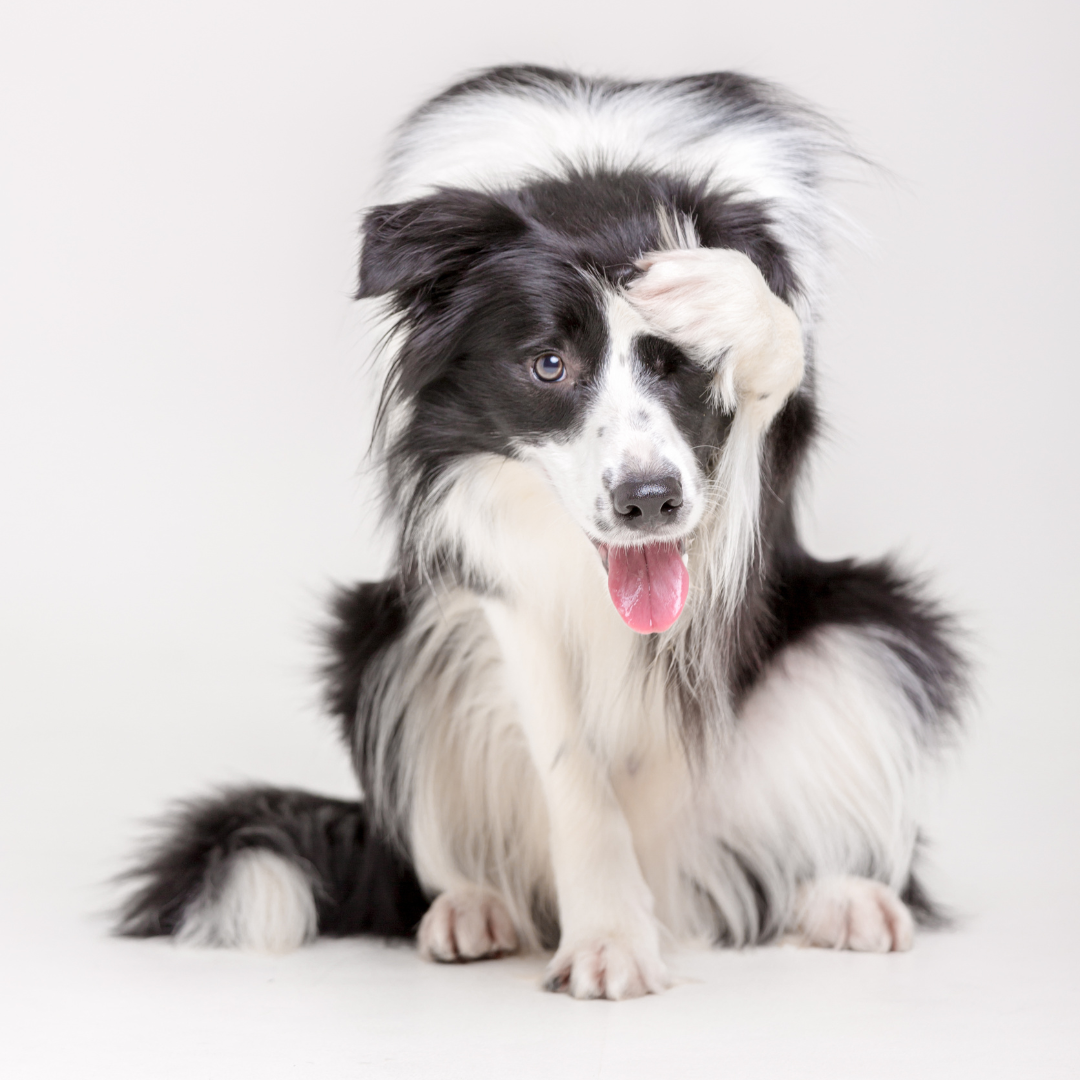Have you ever noticed how anxiety seems to bounce back and forth between you and your dog during stressful situations? Perhaps you’re both naturally responsive to your environment, and when one of you feels anxious, it creates a kind of emotional domino effect. As an animal behaviourist and energy worker, I’ve observed how these shared emotional experiences create powerful connections between sensitive dogs and their equally sensitive humans.
Two Sensitive Souls: Independent Yet Connected
Many people who are drawn to sensitive dogs often have naturally sensitive nervous systems themselves. This isn’t a weakness—it’s a valuable trait that allows for deeper awareness, empathy, and connection. Your dog didn’t “catch” anxiety from you, nor are you responsible for their natural sensitivity.
Think of it this way: You and your dog are like two musical instruments, each capable of playing your own melodies. When one starts to play a tune of anxiety, the other—already sensitive to that particular frequency—might naturally begin to resonate with it, amplifying the original sound.
The Science of Shared Anxiety
What happens during moments of shared anxiety is fascinating:
- Both you and your dog have independent nervous systems that respond to environmental triggers
- Each of you can experience anxiety separately and for different reasons
- When together, your individual anxiety responses can create a feedback loop
- This amplification happens through shared biological processes:
- Similar stress hormones (cortisol) activate in both your bodies
- Your breathing rates might synchronise unconsciously
- Physical tension in one can trigger alert responses in the other
- Subtle communication cues pass back and forth
This isn’t about blame—it’s about understanding a natural process that happens between two sensitive beings who care deeply about each other.
A Real-Life Example: Mark and Bella
Mark and his rescue dog Bella both tended toward anxiety independently. Mark had always been sensitive to social situations, while Bella, due to her early life experiences, was naturally wary of new environments.
When visitors would come to their home, Bella would show subtle signs of tension—ears slightly back, body stiff. Noticing this, Mark would begin to worry about whether Bella might bark or act uncomfortable, which would create tension in his own body. Bella, highly attuned to Mark’s state, would then become even more anxious, creating a cycle of escalating tension.
During our work together, we discovered that both Mark and Bella had their own valid reasons for feeling anxious. Rather than viewing the situation as Mark “causing” Bella’s anxiety or vice versa, we recognised them as two sensitive individuals whose natural responses were amplifying each other.
The breakthrough came when Mark realised he could acknowledge both his and Bella’s independent feelings while creating a different dynamic between them. By preparing for visitors with a calm routine that addressed both his and Bella’s needs separately, they began developing new patterns together.
The Gift of Having a Sensitive Dog
Sensitive people and sensitive dogs often find each other for good reason. You understand each other on a profound level. You notice things others might miss, feel things deeply, and likely have extraordinary capacity for connection.
This shared sensitivity only becomes problematic when it creates amplifying cycles of anxiety. The good news is that the same mechanism that can intensify anxiety can also intensify calm.
Breaking the Amplification Cycle
Since both you and your dog have your own valid experiences of anxiety, addressing the situation requires supporting both of you:
- Recognise separate triggers: Notice what specifically activates your anxiety versus what activates your dog’s. They might be different.
- Honour both experiences: Neither of you is “causing” the other’s anxiety—you’re both responding to your environments in ways that make sense given your histories and temperaments.
- Create individual support strategies: What helps you feel grounded might be different from what helps your dog feel secure.
- Practice co-regulation: When you’re both calm, practice activities that strengthen your shared sense of security—gentle play, relaxed walks, quiet time together.
- Break the cycle early: Notice the first signs of anxiety in either of you and implement calming strategies before amplification begins.
The Power of Two Sensitive Systems Working Together
While two sensitive nervous systems can sometimes amplify anxiety, they can also create beautiful harmony when in sync positively. Many sensitive dog parents report profound moments of connection that less sensitive pairs might miss:
- Intuiting each other’s needs before they’re expressed
- Sharing quiet moments of deep peace together
- Feeling genuinely understood by another being
- Experiencing mutual comfort during challenging times
A New Perspective for Moving Forward
Instead of seeing your dog’s anxiety and your own as a problem to fix, consider viewing your sensitivities as sophisticated information systems that sometimes need recalibration.
Next time you notice anxiety building between you and your dog, try this approach:
- Acknowledge: “We’re both feeling this intensity right now.”
- Separate: “My anxiety is about X, while my dog might be responding to Y.”
- Support: “We each need our own forms of reassurance.”
- Connect: Once calmer, reinforce your secure bond through quiet presence.
Remember that the goal isn’t to eliminate sensitivity—it’s one of your greatest gifts. The goal is to prevent unproductive amplification while nurturing the beautiful connection that comes from having two attuned souls sharing life together.
Your sensitive dog isn’t mirroring your anxiety—you’re two sensitive beings learning to dance together in a sometimes overwhelming world. With practice and compassion for both yourself and your dog, you can transform this dance from one of escalating tension to one of mutual support and understanding.
By honouring both your experiences, you create space for a more balanced relationship—one where sensitivity becomes a strength you share rather than a challenge that overwhelms you both.
